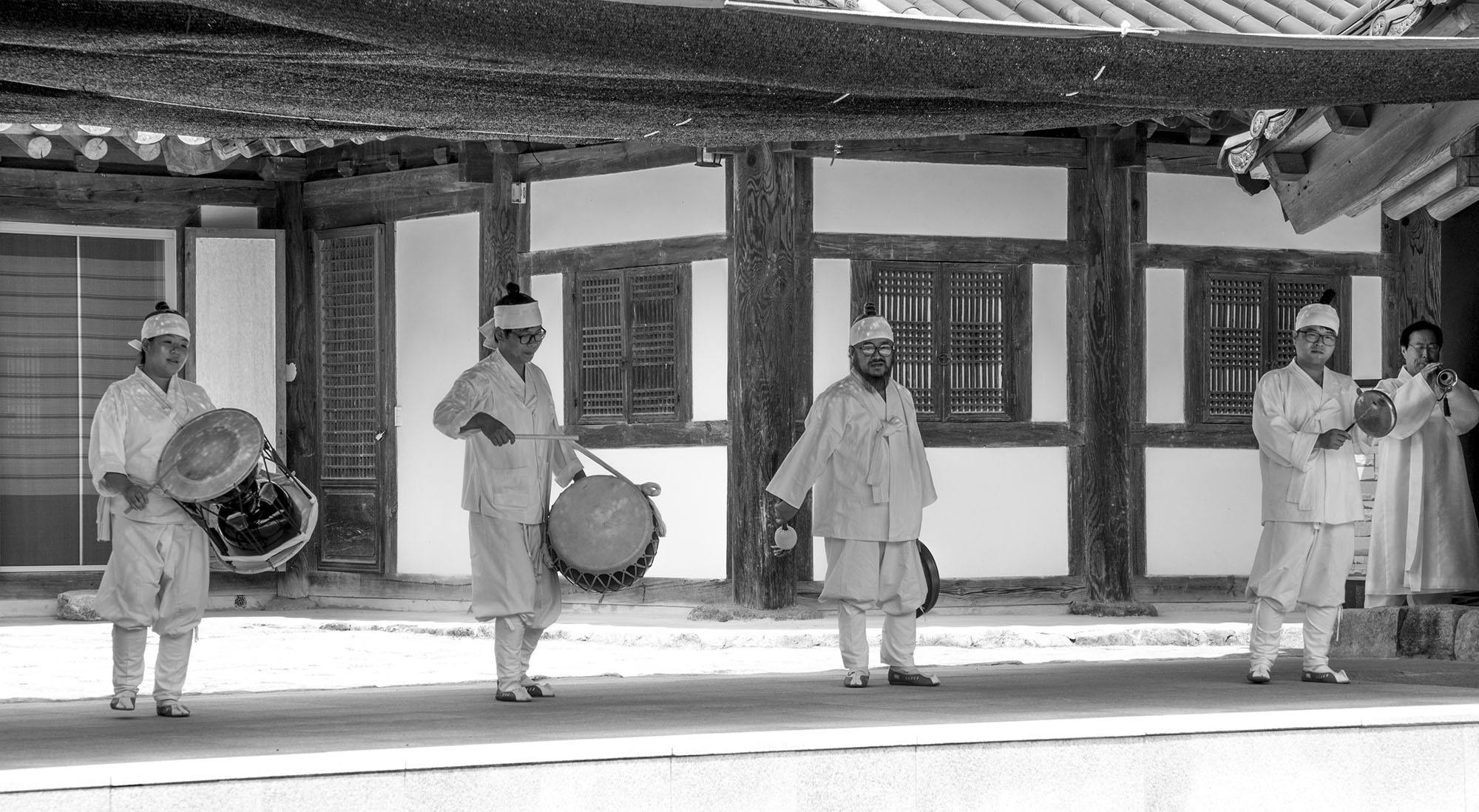Korean time stood still in Hahoe following its creation. The 600-year-old traditional village – around which flows a river – brings Korean history to life. Inhabited by 230 residents, it’s the closest anyone can get (aside from visiting Yangdong) to a living, breathing example of the Republic’s Joseon dynasty.
If you are visiting or plan to visit South Korea, then seriously consider stopping in Andong and spending some time exploring nearby Hahoe: you won’t regret it. Why? Read on.
The Meaning of ‘Hahoe’
Literally translated, ‘ha’ signifies river and ‘hoe’ means to return, or come back. Fittingly, the antique town was arranged – according to the principles of Feng Shui – in the shape of a lotus, floating tranquilly on pond waters; in this case, surrounded semi-circularly by Nakdong River. It’s beautiful!

The rapid modernisation of Korean cities bypassed Hahoe: it still moves to the beat of its very own slow and ancient bucolic drum. Its architectural style has been preserved, as have folk traditions and a clan-based lifestyle.
Getting to Hahoe and Entry Fees
Unique in many ways, stepping foot on a bus at the Central Bus Terminal in Andong (number 46, ₩1800, eight daily) and travelling a modest forty-minutes southwest of Andong to visit the agrarian community is worthwhile. After disembarking, your wallet becomes a little lighter: purchasing a ticket (for 3000 won) is mandatory. However, the reward is worth the expenditure.

Here's why.
Features of Hahoe
The Mask Museum and Performance
Arriving before midday is key, to have the opportunity to visit the Mask Museum (two kilometres from the village) before watching a traditional mask performance. Complete with several hundred time-honoured creations, many of which are used in traditional dances, the museum highlights a key cultural part of Joseon entertainment.
Next is a visit to the Hahoe Byeolsingut Talnori theatre, an open-air building in which performances commence at two pm every Wednesday, Friday, Saturday and Sunday from March through December. Having already purchased a ticket to enter Hahoe, you’ll not need to pay more to watch the sixty-minute performance.






Performers and the audience are intimately close so, be warned: you may be plucked from the auditorium to participate. Actions were universal in nature, so gaining a sense of the content – despite its delivery in Korean - is possible. It provided an insight into daily life as it existed centuries ago.
Exploring Hahoe On-Foot, Hanok and Minbak Stays
Next on the agenda is a visit – with the inclusion of an overnight stay in a minbak – around and through Hahoe Folk Village. Collect a map at the tourist information booth before commencing the hike, to ensure you know where to go to visit the nine tile-roofed aristocratic homes and the twenty-nine thatched cottages scattered throughout.

Not all homes are open to the public, and it is a residential zone, so observe local rules regarding noise and customs. Walk in the direction away from the fields (growing fresh produce), towards the town, and commence exploring.

If you would like to visit the biggest and most prestigious hanok (Bukchondaek), then booking an overnight stay is obligatory; its doors are otherwise closed to the public. A hanok is a traditional Korean house, built using natural materials, with a distinctive architectural style. There are other hanok which are more accessible, including the house of the Musi family, Chiamgotaek, Gyeongdang among others.

Stepping foot within the complexes’ walls is stepping back in time, more so than walking around the village’s periphery by the river. It’s architecture-porn – a tale of Korean antiquity and design finesse.
Samsindang – a Zelkova Tree
Zigzagging your way through town will eventually lead to Samsindang, a 600-year-old zelkova tree. Worshipped by townsfolk, it’s believed to be a goddess, responsible for governing over pregnancy and childbirth.

Write a message on a piece of white paper and tie it to the cord hanging around the tree’s trunk.
Buyongdae Cliff Lookout
The highlight – aside from staying in minbak Rak Ko Jae overnight (a family-run riverside guesthouse bedecked in traditional Korean style) – was crossing the river and walking to the top of Buyongdae Cliff. Overlooking the village gave rise to poetic poise, interpreted – with artistic credence going to village predecessors – as a lotus flower floating on a pond.

Save this article for future reference!
Being Prepared for an Overnight Stay
If staying overnight in Hahoe, it’s important to either request dinner from the minbak owners before close of business or collect goods from a nearby market to consume in your room.



It’s a small village, so the conveniences of other Korean towns and cities do not exist here.
Enjoy Your Stay in Joseon Korea
Relax, enjoy the silent tranquillity, and take a trip back in time.
